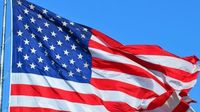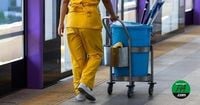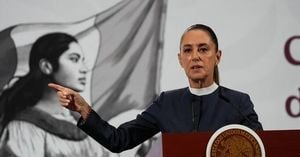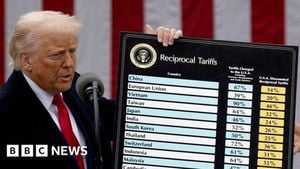This year’s Labor Day, observed on September 1, 2025, lands at a crossroads for the American workforce, with sweeping changes and deep uncertainties rippling across the job market. While the holiday has long been a time to celebrate workers’ achievements and contributions, the spotlight in 2025 falls on the shifting fortunes of white-collar and blue-collar workers, the impact of artificial intelligence, and the political battles over who truly benefits from job growth in the United States.
Across California, the mood is anxious—especially among college graduates and those pursuing high-paying white-collar careers. According to CBS News, artificial intelligence (AI) is rapidly changing the landscape, replacing human workers with sophisticated computer-generated assistants, or “agents,” as businesses chase greater efficiency. This technological leap, once thought to threaten mostly blue-collar roles, is now upending the prospects of engineers, analysts, and other professionals who once felt secure.
“We’re now providing digital workers, you know, digital labor. And that is, like, the huge awakening that this is a new, exciting world,” Salesforce CEO Mark Benioff remarked on the Logan Bartlett podcast. He didn’t mince words about the effect on his own company’s hiring: “I think in engineering this year at Salesforce, we’re seriously debating, maybe we aren’t going to hire anybody this year because we have seen such incredible productivity gains because of the agents that work side-by-side with our engineers.”
For students investing years and money into engineering degrees, this is a sobering message. The traditional path from college to a stable, high-paying job is no longer guaranteed. Michael Bernick, a workforce consultant for the San Francisco firm Duane and Morris and former head of California’s Employment Development Department, pointed out to CBS News a grim statistic: more than half of California’s college graduates are currently employed in roles that don’t require a four-year degree.
“The narrative of past Labor Days, over the past 50 years, has almost entirely been one of our blue-collar decline,” Bernick explained. “Those jobs are making a comeback. And the important thing about those jobs is that they can’t be replaced by AI.” He blames what he calls the “Education-Industrial Complex” for steering students away from trade schools and community colleges, stigmatizing hands-on careers even as these roles become more valuable in the face of technological disruption.
At Los Medanos College in Pittsburg, California, the focus is on teaching practical, hands-on skills using the latest technology. Jeff Andre, who teaches in the school’s Process Technology program, believes there are limits to what machines can do. “You can’t build a machine that can think like a human, act like a human, or look out for each other like humans can,” Andre told CBS News. “You need people to operate that.”
Andre and his colleagues are working to change perceptions about trade careers. “We’re really trying to reach people of all ages right now to say, you don’t have to sign up for a four-year school if that’s not your thing,” he said. “Learn a trade. Learn a skill. Because if you do learn a trade or a skill, you can take it anywhere.”
Since the pandemic, job losses have been driven by a combination of forces—economic shifts, automation, and now, the accelerating influence of AI. For many, the ability to work with their hands or master a specialized trade is emerging as a kind of insurance policy in an unpredictable world.
The political dimension of Labor Day 2025 is impossible to ignore. In Washington, D.C., Department of Homeland Security Secretary Kristi Noem marked the holiday by touting what she described as a comeback for American workers under President Trump’s administration. “This Labor Day, America works for Americans again. 100% of all new job gains have gone to U.S. citizens, and 2.5 million Americans are back at work since January. Under Biden, 88% of all jobs went to foreign born workers. Meanwhile DHS reforms have saved taxpayers over $13.2 billion,” Secretary Noem said in a statement released by DHS.
Noem emphasized that new jobs created since President Trump took office are going to American citizens, drawing a sharp contrast with the previous administration. DHS also reported an estimated decline of 1.6 million illegal aliens nationwide, tying this figure to increased enforcement and reforms. “President Trump and I are putting the American worker FIRST. Happy Labor Day!” she declared.
According to DHS, the agency’s reforms have saved U.S. taxpayers more than $13.2 billion, all without cuts to law enforcement, border security, national security, immigration enforcement, or public safety positions. The administration also highlighted that 70% of arrests by Immigration and Customs Enforcement (ICE) involved illegal aliens convicted or charged with crimes in the U.S.—a statistic meant to reassure Americans about the safety and integrity of the labor market.
While national debates swirl, Texas is celebrating its own workforce milestones. The Texas Workforce Commission (TWC) recognized a record workforce of 15.85 million working-age Texans supporting more than 676,000 employers. According to KAUZ, the state has seen remarkable growth in several areas: more than 36,500 active apprentices—an 84% jump over five years—are learning vital trades, and over 69,000 Texans with disabilities have received Vocational Rehabilitation services in 2025 alone.
Veterans are also finding new opportunities, with job fairs connecting 26,500 employers to more than 52,000 veterans. Meanwhile, grants have helped create or upgrade more than 435,000 skilled jobs across the state, and career coaches have reached students through over 945,000 education outreach engagements since 2019. TWC’s recognition of these achievements underscores a broader trend: states are investing in workforce development, apprenticeships, and inclusive employment strategies to adapt to a rapidly changing economy.
Amid the rhetoric, numbers, and innovations, one thing is clear: the American workforce is in flux. The future of work will likely be defined by adaptability, resilience, and a willingness to embrace both technology and the timeless value of skilled labor. Whether in the high-tech corridors of Silicon Valley, the bustling workshops of Texas, or the classrooms of community colleges, workers and policymakers alike are grappling with what it means to thrive in a world where change is the only constant.
As Labor Day 2025 fades into memory, the questions it raised about opportunity, fairness, and the future of work remain as urgent as ever. For millions of Americans, the answers will shape not just their livelihoods, but the very fabric of the nation’s economy and identity.






